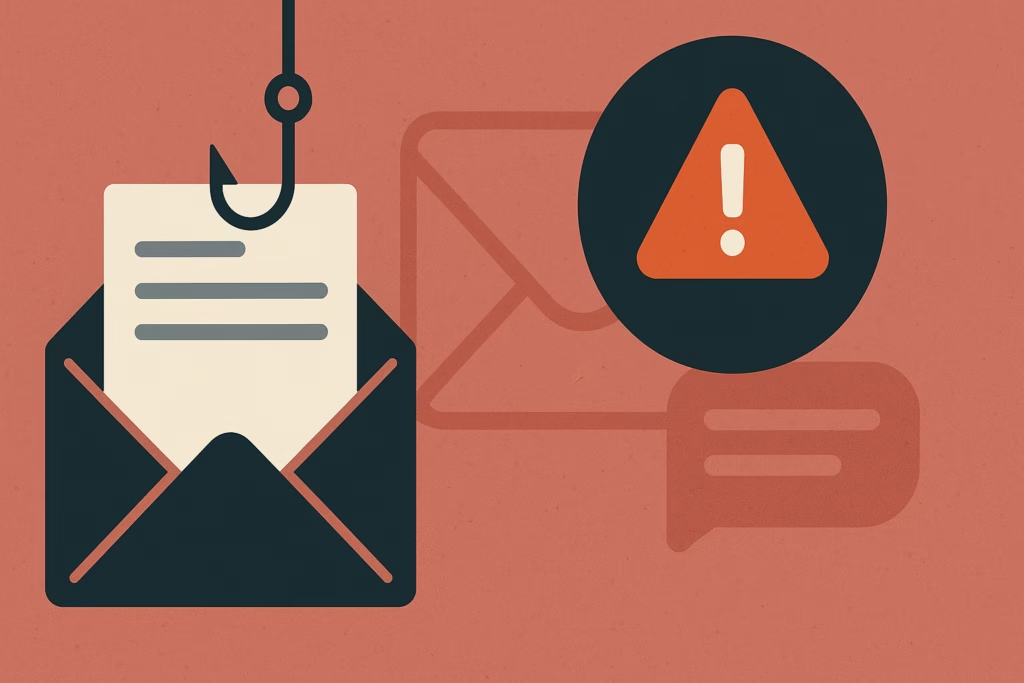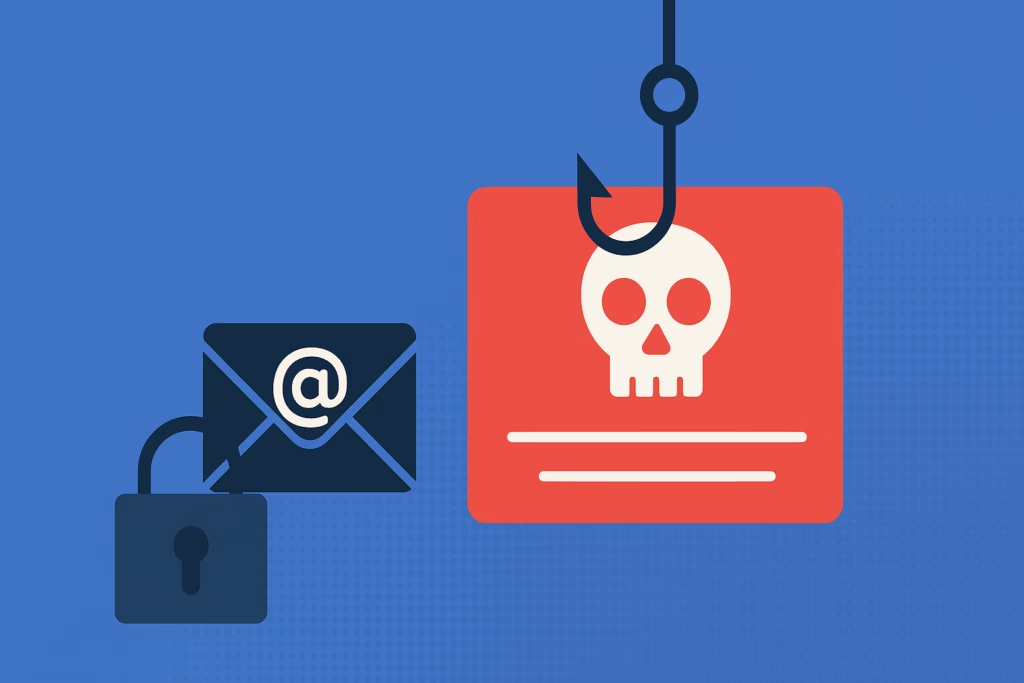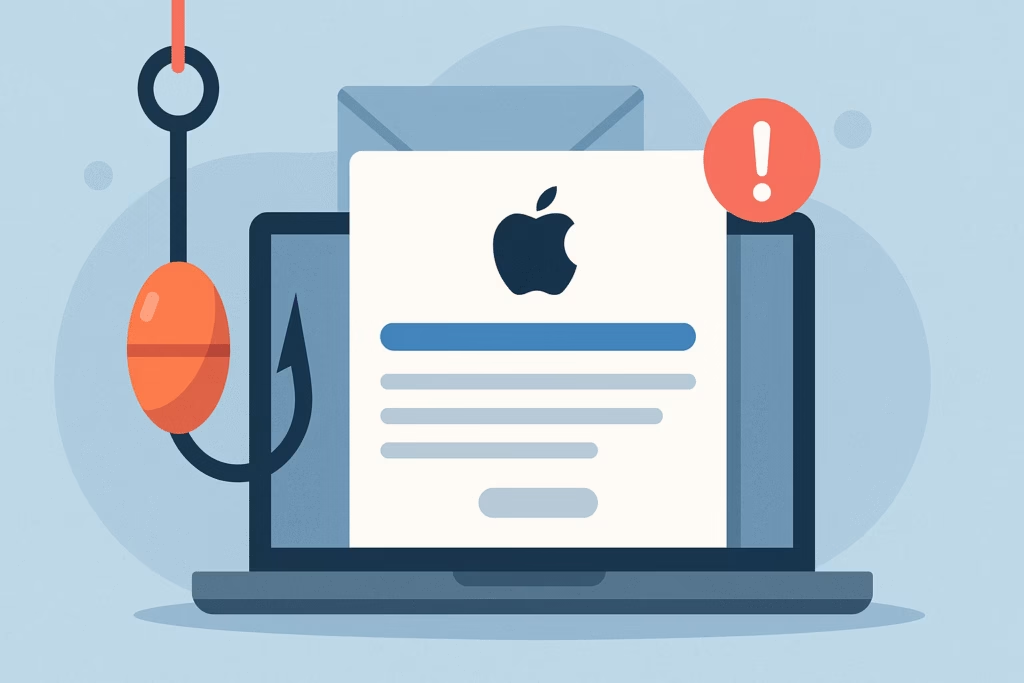
Phishing attacks continue to plague American businesses and consumers, with cybercriminals stealing billions of dollars annually through deceptive email campaigns. According to the FBI’s Internet Crime Complaint Center, phishing schemes resulted in over $57 million in losses in 2022 alone. The sophistication of these attacks has evolved dramatically, making it increasingly challenging for users to distinguish legitimate emails from malicious ones.
Understanding the key warning signs of phishing emails is your first line of defense against these cyber threats. By recognizing phishing email signs early, you can protect your personal information, financial assets, and business data from falling into the wrong hands.
Understanding the Anatomy of Phishing Emails
Phishing emails are carefully crafted messages designed to trick recipients into revealing sensitive information or clicking malicious links. These attacks typically impersonate trusted organizations, create false urgency, and exploit human psychology to bypass rational thinking.
Modern phishing campaigns often target specific industries or demographics, using publicly available information to create highly personalized attacks. This evolution from generic “spray and pray” approaches to targeted spear-phishing makes detection more critical than ever.
Critical Phishing Email Signs to Watch For
Suspicious Sender Information
The sender’s email address often provides the first clue about a message’s legitimacy. Legitimate organizations use consistent, professional email addresses that match their official domains.
Red flags in sender information include:
- Misspelled domain names (e.g., “amazom.com” instead of “amazon.com”)
- Generic email addresses from free providers (Gmail, Yahoo, Hotmail) claiming to represent major corporations
- Unusual character substitutions in domain names
- Subdomain spoofing attempts
- Display names that don’t match the actual email address
Always verify the sender’s complete email address by hovering over the “From” field rather than relying solely on the display name.
Urgent or Threatening Language
Phishing indicators often include manipulative language designed to create panic and force immediate action. Cybercriminals exploit fear, greed, and curiosity to bypass critical thinking.
Common urgency tactics include:
- “Your account will be closed within 24 hours”
- “Immediate action required to avoid suspension”
- “Limited time offer – act now!”
- “Verify your information to prevent security breach”
- “Suspicious activity detected on your account”
Legitimate organizations rarely demand immediate action through email, especially regarding sensitive account information. They typically provide multiple contact methods and reasonable timeframes for any required actions.
Generic Greetings and Impersonal Content
Professional organizations typically address customers by name and reference specific account details. Phishing emails often use generic greetings because attackers don’t have access to personal information.
Warning signs include:
- “Dear Customer” or “Dear User”
- “To Whom It May Concern”
- “Dear Sir/Madam”
- Complete absence of personalization
- Vague references to “your account” without specifics
Technical Phishing Red Flags
Suspicious Links and URLs
Malicious links represent one of the most dangerous aspects of phishing emails. These links often lead to fake websites designed to steal credentials or install malware.
URL inspection techniques:
- Hover over links without clicking to preview the destination
- Look for misspelled domain names or unusual extensions
- Check for URL shorteners that obscure the true destination
- Verify HTTPS encryption on sensitive pages
- Be wary of links with excessive subdomains or random characters
The Cybersecurity and Infrastructure Security Agency recommends always typing website addresses directly into your browser rather than clicking email links when dealing with sensitive accounts.
Unexpected Attachments
Malicious attachments remain a primary vector for malware distribution. Attackers often disguise executable files as legitimate documents or use macro-enabled files to bypass security measures.
High-risk attachment types include:
- Executable files (.exe, .bat, .com, .scr)
- Macro-enabled documents (.docm, .xlsm, .pptm)
- Archive files (.zip, .rar) containing executables
- Script files (.js, .vbs, .ps1)
- PDF files with embedded scripts
Never open attachments from unknown senders, and be cautious with unexpected attachments from known contacts, as their accounts may be compromised.
Content and Formatting Red Flags
Poor Grammar and Spelling
While sophisticated phishing attempts may have flawless grammar, many still contain obvious errors. Professional organizations typically maintain high standards for written communication.
Common indicators include:
- Obvious spelling mistakes and typos
- Grammatical errors and awkward phrasing
- Inconsistent formatting and fonts
- Unusual punctuation patterns
- Translation artifacts suggesting non-native speakers
Inconsistent Branding
Legitimate organizations maintain consistent branding across all communications. Phishing attempts often contain subtle branding inconsistencies that reveal their fraudulent nature.
Branding red flags:
- Outdated or low-quality logos
- Incorrect color schemes or fonts
- Missing or altered company signatures
- Unprofessional layout and design
- Inconsistent terminology or messaging
Real-World Phishing Examples
Banking Phishing Scams
Bank impersonation remains one of the most common phishing tactics. These emails typically claim unauthorized access attempts or required security updates.
Example warning signs:
- Requests to verify account information via email
- Claims of suspicious transactions requiring immediate verification
- Links to fake banking websites with slightly altered URLs
- Urgent language about account closure or suspension
Remember that legitimate banks never request sensitive information via email and typically contact customers through secure messaging within their official apps or websites.
COVID-19 Related Phishing
The pandemic created new opportunities for cybercriminals to exploit public concerns about health and safety. These campaigns often impersonate health authorities or offer fake cures and treatments.
The Federal Trade Commission has documented thousands of COVID-related phishing attempts targeting American consumers with fake vaccine offers, stimulus payment scams, and fraudulent health product promotions.
Advanced Phishing Detection Techniques
Email Header Analysis
Email headers contain technical information that can help identify phishing attempts. While this requires some technical knowledge, it provides definitive proof of an email’s origin.
Key header elements to examine:
- Return-Path: Should match the sender’s domain
- Received: Shows the email’s routing path
- SPF, DKIM, and DMARC records: Verify sender authentication
- Message-ID: Should be consistent with the sending domain
- Date and time stamps: Check for inconsistencies
Cross-Reference Verification
When receiving suspicious emails claiming to be from legitimate organizations, always verify through independent channels:
- Contact the organization directly using official phone numbers
- Log into your account through the official website
- Check the organization’s official social media for security alerts
- Consult with IT security professionals in your organization
- Use online phishing databases to check known threats
Protecting Your Organization
Employee Training and Awareness
Human error remains the weakest link in cybersecurity. Regular training helps employees recognize phishing indicators and respond appropriately to suspicious emails.
Effective training components include:
- Regular simulated phishing exercises
- Updated threat intelligence briefings
- Clear reporting procedures for suspicious emails
- Recognition programs for security-conscious behavior
- Incident response protocols
Technical Safeguards
While training is essential, technical solutions provide crucial automated protection against phishing threats. Advanced email security solutions can detect and block phishing attempts before they reach users’ inboxes.
Modern phishing protection services like PhishDef use artificial intelligence and machine learning to identify sophisticated phishing attempts that traditional filters might miss. These solutions analyze email content, sender reputation, and behavioral patterns to provide comprehensive protection.
Steps to Take When You Encounter Phishing
When you identify a potential phishing email, follow these immediate steps:
- Do not click any links or download attachments
- Do not reply to the message
- Report the email to your IT security team
- Forward the email to the Anti-Phishing Working Group at reportphishing@apwg.org
- Delete the email after reporting
- Monitor your accounts for unusual activity
- Update your security awareness training based on new threats
Key Takeaways
Recognizing phishing email signs requires vigilance and understanding of common attack patterns. The most effective defense combines technical knowledge with healthy skepticism about unsolicited emails requesting sensitive information.
Remember these critical phishing red flags: suspicious sender information, urgent language, generic greetings, malicious links, unexpected attachments, poor grammar, and inconsistent branding. When in doubt, verify through independent channels before taking any action.
Regular training, technical safeguards, and clear incident response procedures create a comprehensive defense against phishing threats. Stay informed about emerging attack patterns and maintain a security-first mindset when handling email communications.


